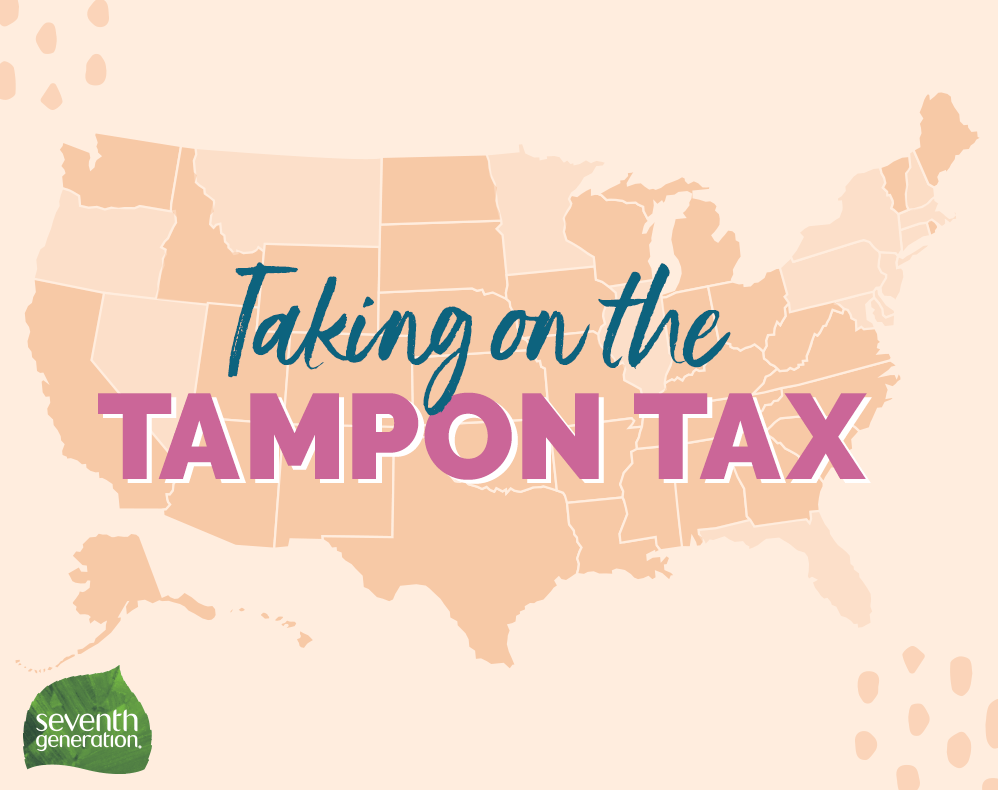If you’re part of the 50% of the population that menstruates, you don’t need us to tell you periods are expensive. But let’s take a deeper look at the numbers: the average menstruator in the U.S. spends an estimated $120 annually on period products .Assuming 40 years of periods this equates to, around $4,800 over the course of a lifetime.
Some type of product, such as a pad, tampon or cup, is necessary when menstruating. the Food and Drug Administration, deems tampons as medical devices, a classification that supports the fact that period products are a basic necessity. In most states, items that fall under this term, like prescription medications and contact lenses, are exempt from being taxed. And yet, for some reason, the majority of states (32 out of 50, to be exact) in the U.S. add a sales tax to tampons, pantiliners, and pads when many other products deemed ‘necessary’ get away without the tax. This tax is yet another barrier that many people with periods face when accessing the period care products they need.
The term “tampon tax” refers to the fact that menstrual products cost more than they need to because, in most states, a sales tax is added on. This tax inherently falls on women and those who menstruate, and, more abstractly, it strengthens the stigma around menstruation. When items considered “medical necessities” go tax free, but period products are taxed, it undermines menstruation: The tax implies that periods are something outside the realm of a “normal” human experience, which, let’s face it, couldn’t be further from the truth.
"Basically we are being taxed for being women," said Cristina Garcia, an assemblywoman fighting for menstrual equity in California, where period products are still taxed. “Women have no choice but to buy these products, so the economic effect is only felt by woman [sic] and women of color are particularly hard hit by this tax. You can't just ignore your period, it's not like you can just ignore the constant flow."
When you consider the cost of the tax on its own — in California, for example, a 6% sales tax on a $7 box of tampons amounts to 42¢ — the change can seem insignificant. But, for the 13.8% of women in the state who live below the poverty line, every penny counts. Many menstruators across the U.S. struggle to afford period products: A recent survey of low-income women in St. Louis revealed that two-thirds couldn’t afford menstrual products in the past year. The survey responses shed light on the magnitude of this issue: within the past year, there were times when women couldn’t afford to buy both food and period products. When people are forced to choose between eating and caring for their period, something is not right.
The tampon tax is particularly egregious when you examine items that are tax exempt in many states: snacks from vending machines, candy and soda all make the cut. Prescription drugs like Viagra, Rogaine and birth control are all valued as medical necessities and also go untaxed.
It can be discouraging to learn that, in so many states, there are major barriers to caring for your period — a basic human right. But there’s a lot to feel optimistic about. Many states have passed legislation that make period products tax free. A handful of states have actively ditched their tampon tax, including Illinois, Nevada, Pennsylvania, Minnesota, New York, Massachusetts, Maryland, Florida, Ohio, New Jersey and Connecticut. Other states, including Arizona and Nebraska, have introduced bills to follow suit.
Five states in the U.S. do not have sales taxes, so tampons sell for their marketed listing. In the rest of the country, however, the tampon tax is alive and (not) well. Still, there’s been a ton of notable progress at local levels: In March 2019, the city of Denver voted to remove its 4.3% sales tax from pads and tampons. The more awareness we build around this issue, the more policymakers will have to listen. To achieve menstrual equity across the U.S. we have to continue to fight for remaining states to abolish their tax.
Repealing the tampon tax across the country won’t solve America’s menstrual equity problem but it’s a leap in the right direction.


